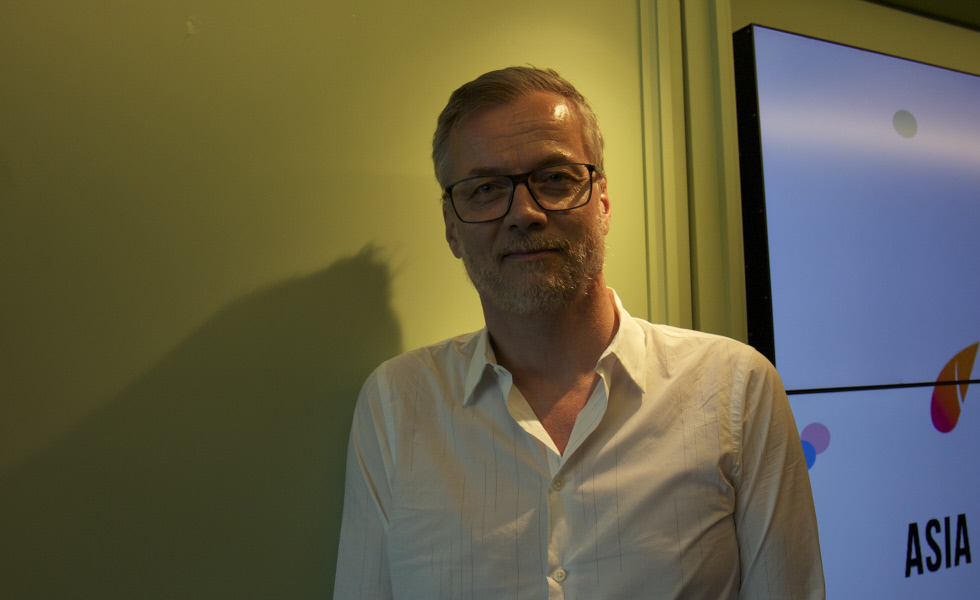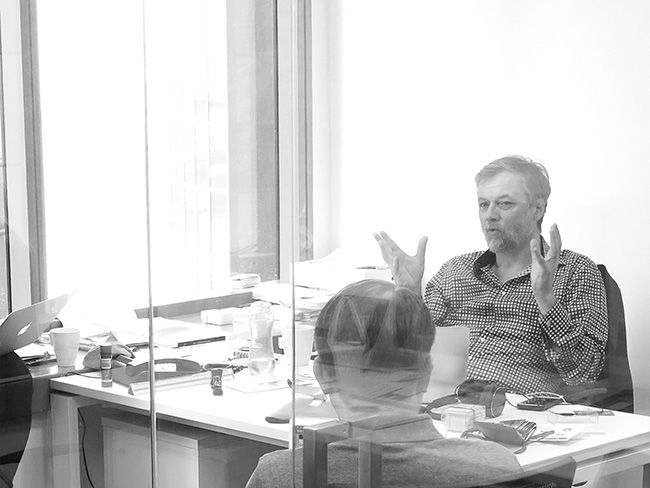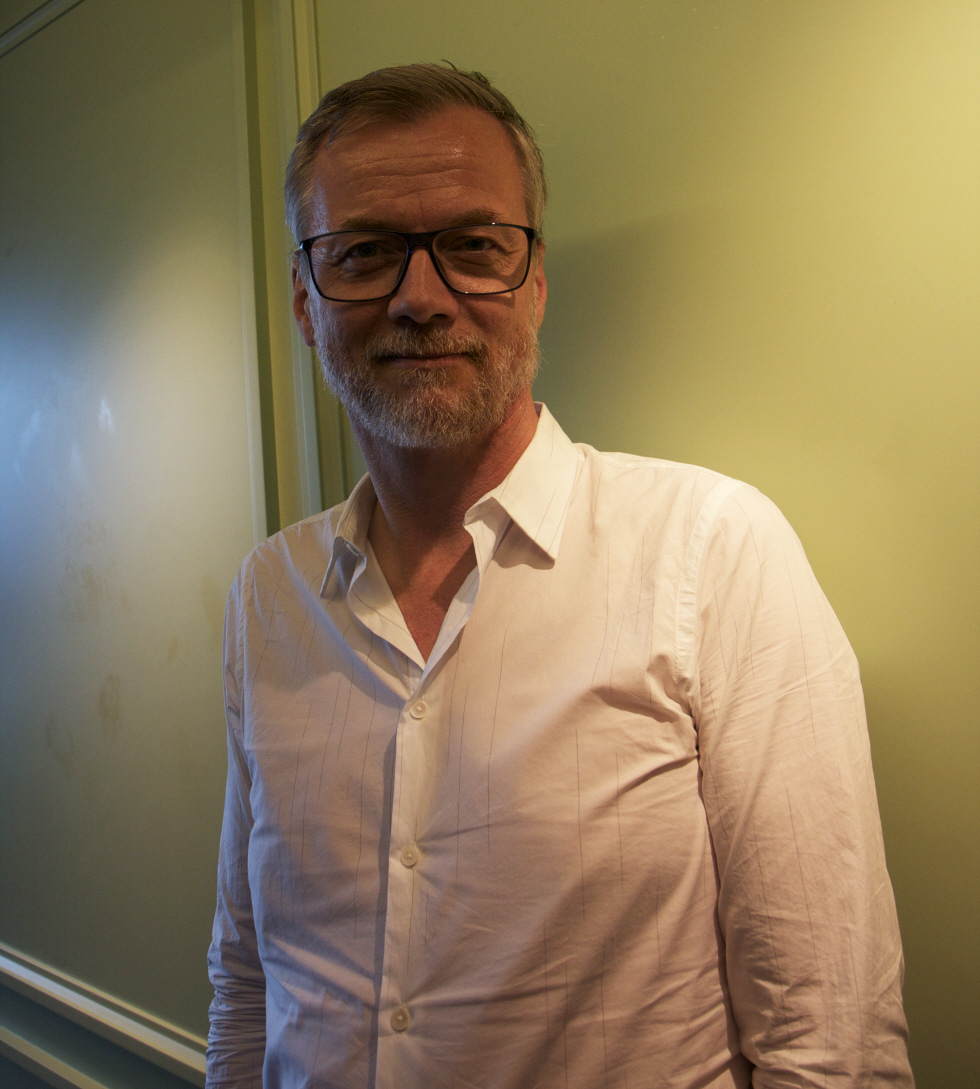All about digital transformation with Acoustic
There is a buzz around ‘digital transformation’. Everybody reads and hears about it these days. But what does it actually mean for one’s business? And how can, or should, one go about addressing it?
As there is a Nordic person based in Singapore, and who has made it into his service to help companies to take this journey, Scandasia curiously turned to him to share his advice and approach to, what is for many, a complex topic.

He is Erik Ingvoldstad, a veteran in digital media, creativity and strategic development, who today runs Acoustic Group, an independent, strategic innovation and transformation consultancy.
Erik, presents very clear and understandable advice, which also constitutes the guiding principle also for his services – what he can do for you and me. Then, it is up to every individual to make one’s own assessment of it. One thing that is for certain is that no sector can disregard this.
Digital by definition
He writes on his blog: “Digital Transformation is on everyone’s lips these days, from cool new start-ups, to the mastodons of the corporate world. The business models of yesterday are changing, and disruption is happening in all industries, across all markets. The disruption is driven by new competitors, new ideas, new technology, new mind-sets and new cultural shifts that are making it more and more challenging for companies to stay connected with their customers and to just keep the business running as usual.”
And yet, it is far from new – having had big business impact for a long time already.
The issue has been on the desk of the leaders of every single industry for the past 20 years, as stated by an expert in the field, Alberto Barreiro: “Since the emergence and democratisation of digital technologies, everything that could be digitalised was digitalised. Everything was produced, stored, multiplied, distributed and consumed globally for a marginal cost that tends to zero.”
“All business strategy is digital by definition, because digital is not about software, it’s the mind-set that defines the world that surrounds us.”
Solving real problems
Erik’s approach is completely in line with this – working in the cross-section between technology, strategy and creativity.
“Acoustic come from a cultural perspective; meaning that we work with developing internal innovation culture, but also solving real problems that real people have,” he says. “So we help companies look for the end problem, their core problem, which sits outside the company.”
“You have to have a strategy about: What is my business model for the future? And that’s where the creativity comes in, looking for problem solving in other spaces than you would usually look for it. And that’s what we work with.”
“Create a strategy that is flexible enough to leverage the right technologies at the right time for the right purpose. Make sure that the focus remains on solving customer problems, service challenges, and making life generally easier for your customer,” recommends the Norwegian.
“As a creative director and person I have always been interested in solving problems. And note that I call it problems and not challenges; I like to call a spade a spade; if it’s a problem, then it’s a problem, and it’s a great thing, because problems can be solved.“
“Now, how do traditional companies do that? Some of them have kind of lost their way. So we try to help them to find that way and help them how to use technology to connect with the audience.”

Adaptive transformation
Meanwhile, Erik also points out the importance to be adaptive, and that the use of any technology therefore needs to be that too.
“This will keep changing over time, and you can’t be stuck with a strategy that locks in a specific technology or platform. Digital transformation is not primarily about technology. Sounds counterintuitive, I know, but it is a cultural and strategic process, where technology plays an important part.”
We don’t sell technology, no products whatsoever, because I believe that the solution may be artificial intelligences for some clients, it could be building physical hardware products for others, or software solutions, big data solutions – anything!”
“The problem is that the definition of digital transformation is hard for people to grasp because it has got the word ‘digital’ in it. It’s more about transformation than about digital, and that’s my focus. As for ‘digital’ – it goes without saying – we live in a world that is completely digital.”
Erik explains this transformation process further: “It’s the process to get to wherever your business needs to go in this new multi-facetted world, where linear strategies are doomed to fail. It’s about trying to find new ideas to drive tomorrow’s business, finding ways of creating a culture of on-going innovation and creativity that is fully customer-centric. It may sound easier than it is, as it requires focus on truly understanding the customer.”
Acoustic takes the company (client) through strategic workshops and creative processes to possibly come up with new technology, new software solutions, new ways of using existing technology, or new non-technological ways.
And change does not occur in a moment of time. “In order succeed in the new disrupted markets, you need to develop your business continuously and turn the disruption to your advantage. In most businesses, there are areas where you can and must continuously change the model in order to find the right formula for success. Your strategy must allow for that, and consider the different scenarios that may play out.”

Harvesting ideas a core value
In order to get this right, according to Acoustic, one needs a partner who understands the digital culture around us, but who knows people must come before technology.
The company might go and find someone who understands digital, and assign the process to that person. “But like any change process that is of significance for the future of the business, the CEO must own the process, together with the rest of the C-suite. That doesn’t mean that the executive team has to come up with all the input and ideas to drive the change – quite the contrary – getting input and ideas from the customer-facing end of the business is crucial in a customer-centric process.”
“You need to create a culture of creativity and acceptance in the entire organisation. Make harvesting ideas a core value of the business, and make sure others are exposed to the ideas, because as anyone who’s worked with ideas knows, a nugget of a small idea can become a huge idea if the team collaborates, and builds on each other’s input.”
Taking charge of change
“By fully understanding what digital transformation can, and should mean for your business, there really is no downside. The most important thing is to take charge, lead the change rather than letting the change lead you.“
“And disruption in this sense is a good thing; it’s a wake-up call,” adds Erik. If you think, as an existing business in any industry, that: ’I know something’s going to happen in our industry but we’re doing well right now so we will focus on our core business’, then this is the moment where you have to make that shift because disruption is coming whether you like it or not. I like to say that change happens all the time. We can either chose to let it happen or take charge and make it happen, and make sure that we are in control of the change instead of waiting for the change to kind of disrupt us.”
“Many people believe that if you don’t know what to do, it’s better to do nothing than to do the wrong thing. They become stuck in the fear of making the wrong move. This sentiment is truly what separates the old businesses from the new; they’re always kind of one step behind. What I am selling is one step ahead. So that is the challenge for me but the timing is right. I think there’s a growing understanding of the need for digital transformation.”
Acoustic’s core challenge in targeting mid-size to large Singapore-based companies is that this business is very traditional and conservative.
Furthermore, digital transformation is a strategic process, where the outcome will vary from company to company, industry to industry, market to market and strategy to strategy.
“We don’t know what the outcome is going to be – being one of my other challenges that I am not selling something where I can say what you will get out of it. No it’s a process, and that process involves a lot of people internally in the business and harvesting ideas wherever they can come from.”



